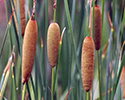
Taxonomical and pharmacological status of Typha: A Review
Abstract
Keywords
Full Text:
PDFReferences
Agata Kurzawska, Danuta Gorecka, Wioletta Blaszczak, Artur Szwengiel. Dominik Paukszta., Gra2yrna Lewandowiez. The molecular and supermolecuiar structure of common cattail (Typha latifolia) starch. Starch-starke.2014, 66, 849-856.
Alexandra-Dana Chitimus, Cristian Radu, Valentin Nedeff, Emilian Mosnegutu, Narcis Barsan. Studies and Researches on Typha latifolia's (bulrush) Absorption Capacity of Heavy Metals from the soil, St. Cerc. St. CICBIA. 2016, 17 (4), 381-393.
Alexeyena Varghese, Usha Gavania, Suja Abraham, Della Grace Thomas Parambi, Sathianarayanan and Asha Jose. Phytochemical Screening and Antimicrobial Investigation of Typha angustifolia Linn. Int. J. Chem. Sci. 2009,7(3), 1905-1910
Boers, A. M., et al., Typha x glauca dominance and extended hydroperiod constrain restoration of wetland diversity. Ecological Engineering 2007, 29, 232-44,
Clegg. J.Observer's Book of Pond Life. Frederick Warne, London. 1986, 460.
Dubbe, D. R., et al., Production of cattail (Typha spp.) biomass in Minnesota, USA. Biomass 1988, 17(2), 79-104.
Elias, T. S.; Dykeman, P. A. Edible Wild Plants. New York, NY: Sterling Publishing Co., Inc., 2009, 69-70. ISBN 978-1-4027-6715-9.
Global Invasive Species Database: "Uses"- Retrieved 2017, 01-20.
Gore, A. B. Environmental Research at the Leading Edge. New York: Nova Science Publishers, Inc. p. 2007, 106.
Grace, J. B. and J. S. Harrison.The biology of Canadian weeds. 73. Typha Iatifolia L., Typha angustifolia L. and Typha x glauca Godr. Can. J. Plant Sci. 1986, 66, 361- 379.
Grace, J. B. and Wetzel, R. G. Habitat partitioning and competitive displacement in cattails (Typha): experimental field studies. The American Naturalist 1981, 118, 463-74.
Kaminski, R. M., et al., Control of cattail and bulrush by cutting and floodin. In: Coastal Wetlands. 1985, 253-62., Lewis Publishers.
Keddy, P. A. Wetland Ecology: Principals and Conservation. Cambridge University Press. 2010, 497. ISBN 978-0-521-519404.
Maiden, J. H. Useful Native Plants of Australia (incl. Tasmania). Sydney: Technological Muse New South Wales, 1889.
Making Aquatic Weeds Useful: Some Perspectives for Developing Countries. Ottawa: National Research Council. Books for Business. 1976. p. 101. ISBN 0-89499-180-9.
Marsh, L. C. "The Cattail Story". The Garden Journal. 1959, 5, 114-129.
Miller, D. T. Edible and Useful Plants of Texas and the Southwest, Including Recipes, Harmful Plants, Natural Dyes, and Textile Fibers: A Practical Guide. Austin: University of Texas Press. 1999, 147. ISBN 97870-292-78164-1.
Mitch, L. M. Common cattail, Typha latifolia L. Weed Technology. 2000, 14, 446-450.
Morton, J. F. "Cattails (Typha spp.) Weed Problem or Potential Crop?". Economic Botany. 1975, 29 (1), 7-29. doi:10.1007/bf02861252.
Motivans, K. and S. Apfelbaum. Element stewardship abstract for Typha spp., North American cattails. The Nature Conservancy, 1987.
Murkin, H. R. and P. Ward. Early spring cutting to control cattail in a northern marsh. Wildlife Society Bulletin. 1980, 8, 254-256.
Oudhia, P. Allelopathic TEMPeffects of Typha angustata on germination and seedling vigour of winter maize and rice. Agric. Sci. Digest. 1999, 19(4), 285-286
Pawar CR, Kolhe VN & Ithedkar PA Anti-inflammatory Activity of leaves of Typha angustifolia (Typhaceac), IMAM, 2011, 2(5), 1598-1600.
Raupo or Bulrush (Typha orientalis). Tai Awatea. Accessed 15 December 2011.
Reed, E.; Marsh, L. C."The Cattail Potential". Chemurgic Digest. 1995, 3, 14: 9,
Revedin A et al., “Thirty thousand-year-old evidence of plant food processing". Proc Natl Acad Sci U S A. 2010, 107 (44), 18815-18819.
Shipley, B., et al., Regeneration and establishment strategies of emergent macrophytes. Journal of Ecology 1989, 77, 1093-1110.
Stevens, M. and C. Hoag. NRCS plant guide: Narrowleaf cattail, Typha angustifolia L. USDA, NRCS, National Plant Data Center and Idaho Plant Materials Center, 2000.
"Typha". Natural Resources Conservation Service PLANTS' Database. USDA, Retrieved 12 December 2015
Van der Valk, A. G., and Davis, C. B. The seed banks of prairie glacial marshes. Canadian Journal of Botany. 1976, 54, 1832-1838.
DOI: https://doi.org/10.21746/aps.2018.7.3.2
Copyright (c) 2018 Annals of Plant Sciences

This work is licensed under a Creative Commons Attribution-NonCommercial-NoDerivatives 4.0 International License.


